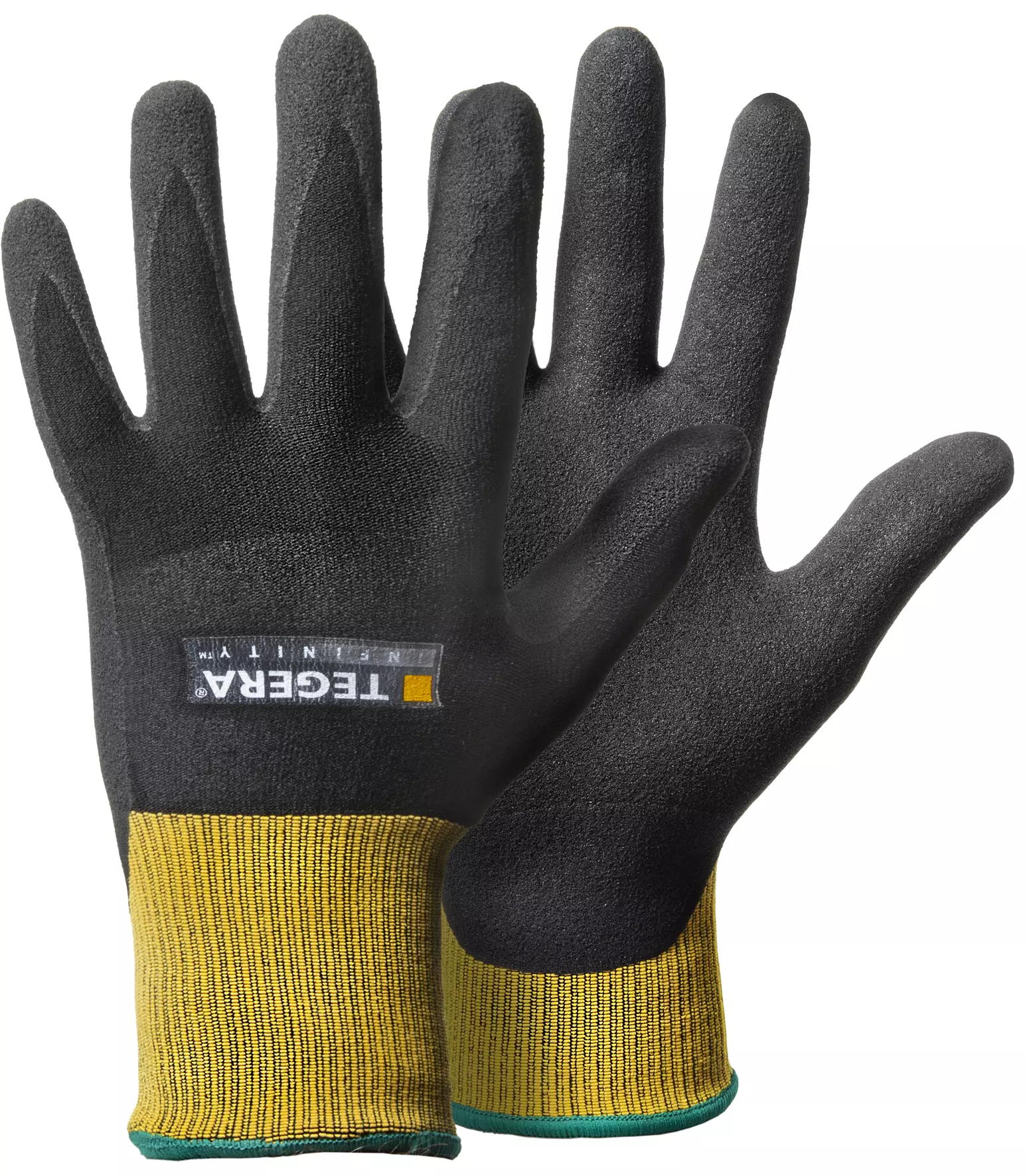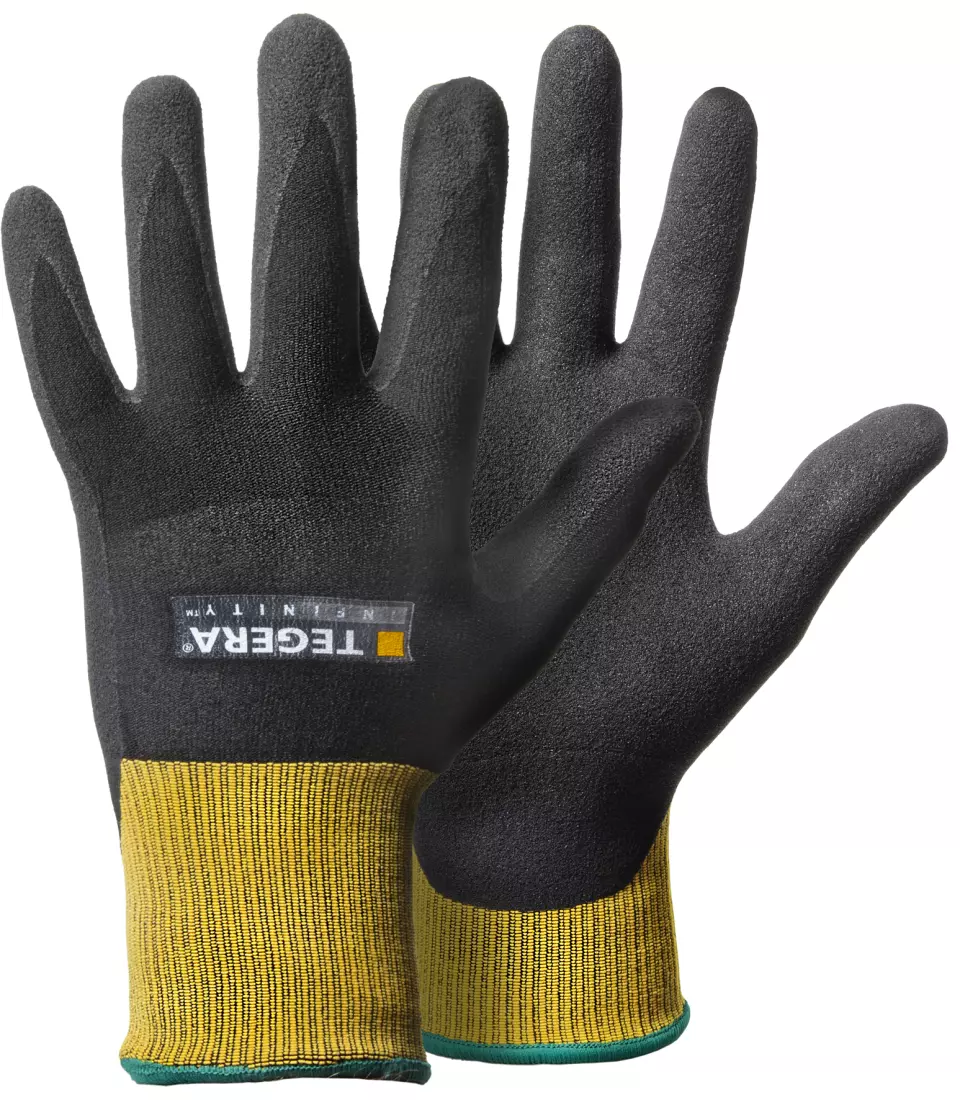
Tegera Synthetic Glove 8801 INFINITY
Tegera Synthetic Glove 8801 INFINITY
(17)


Features You'll Love

Grip Finish · Foam
The surface texture or coating on the palm and fingers that determines how securely the gloves can grip tools, materials, and surfaces during work tasks.
The surface texture or coating on the palm and fingers that determines how securely the gloves can grip tools, materials, and surfaces during work tasks.
The surface texture or coating on the palm and fingers that determines how securely the gloves can grip tools, materials, and surfaces during work tasks.
Tegera
Synthetic Glove 8801 INFINITY, 6 pairs
Synthetic Glove 8801 INFINITY, 6 pairs
(17)
31,09 €
Price per 6 pairs
5,18 € / pair
Choose size
Shipping fee is 7,94 € for orders under 80,00 €
Features You'll Love

Grip Finish · Foam
The surface texture or coating on the palm and fingers that determines how securely the gloves can grip tools, materials, and surfaces during work tasks.
The surface texture or coating on the palm and fingers that determines how securely the gloves can grip tools, materials, and surfaces during work tasks.
The surface texture or coating on the palm and fingers that determines how securely the gloves can grip tools, materials, and surfaces during work tasks.
Product description
TEGERA® 8801 Infinity, Synthetic glove, nitrile foam/aqua PU, palm coated, nylon, spandex, 15 gg, brushed foam, Cat. II, contact heat resistant up to 100°C, DMF (DMFa)-free, installation work
TEGERA® 8801 Infinity, Synthetic glove, nitrile foam/aqua PU, palm coated, nylon, spandex, 15 gg, brushed foam, Cat. II, contact heat resistant up to 100°C, DMF (DMFa)-free, installation work
TEGERA® 8801 Infinity, Synthetic glove, nitrile foam/aqua PU, palm coated, nylon, spandex, 15 gg, brushed foam, Cat. II, contact heat resistant up to 100°C, DMF (DMFa)-free, installation work
Full finger coverage offers complete protection and warmth, keeping your hands safe and comfortable.
Flexible knit construction provides a comfortable, snug fit for enhanced dexterity and all-day comfort.
Multi-purpose design offers versatile protection and comfort, ready for a wide range of tasks.
A snug knit cuff comfortably seals out debris and keeps your gloves securely in place, ensuring a comfortable and protected fit.
The elastic cuff provides a snug, secure fit, keeping debris out and ensuring your gloves stay comfortably in place.
Effortlessly slip your gloves on and off for quick transitions and unhindered movement.
Indicates which areas of the glove have protective or grip-enhancing coating applied, affecting durability, grip, and dexterity in different work tasks.
The surface texture or coating on the palm and fingers that determines how securely the gloves can grip tools, materials, and surfaces during work tasks.
Refers to the knit density of the glove fabric, affecting dexterity, comfort, and durability. Higher numbers provide better finger movement and sensitivity.
- Cut Resistant
- Heat & Flame Resistance
- Hand Protection
- Food Service
Protective gloves with the EN 420:2003+A1:2009 rating are tested for general design, safe materials (innocuousness), water penetration, comfort, and dexterity. This ensures the gloves are safe, fit correctly, and allow you to perform tasks effectively without discomfort.
Gloves with the EN 407:2004 rating are tested for protection against various thermal risks including flammability, contact heat, convective heat, radiant heat, and splashes of molten metal. This means you can choose gloves that offer certified protection against specific heat and fire hazards for your safety.
Test results
This product was not tested for protection against convective heat, which is the transfer of heat through moving air, such as from a flame. Therefore, it has no claimed performance level for this specific thermal risk.
This product has not been tested for resistance against splashes of molten metal under the EN 407 standard. It does not offer rated protection for tasks where this is a risk, such as welding.
This product has not been tested for resistance against splashes of molten metal. It provides no claimed protection and should not be used for welding, foundry work, or other tasks with molten metal risks.
This product has not been tested for its performance when exposed to an open flame. It is not rated for fire resistance and should not be used for protection against direct contact with flames.
Provides protection when briefly touching hot objects. Certified for contact with surfaces up to 100°C for at least 15 seconds, offering short-term protection against burns from items like hot cookware or machinery parts.
This product was not tested for protection against radiant heat, which is intense heat that can be felt from a distance. It does not claim to offer protection for tasks involving prolonged exposure to radiant heat sources.
Protective gloves with the EN 388:2016 rating are tested for resistance against mechanical risks like abrasion, cuts, tears, punctures, and optional impact. This rating helps you quickly identify and choose gloves that offer the right level of protection for your hands during various tasks.
Test results
Offers moderate resistance against snagging or catching on rough objects, preventing small rips from growing.
Provides basic protection against punctures from blunt objects like splinters, not sharp points like needles.
Provides the highest level of cut protection, passing a specialized test for materials that dull blades.
Provides minimal protection against cuts from a rotating blade under constant, low force.
Offers the highest level of protection against intense rubbing and wear from rough materials.
Oeko-Tex Standard 100 is a product certification program for textiles, which is awarded by the Oeko-Tex Association. This program verifies that the textile products are free from harmful chemicals. To be able to use the Oeko-Tex Standard 100 label, a product must meet certain requirements set by the Oeko-Tex Association which include limits on the levels of harmful substances such as pesticides, heavy metals, and formaldehyde. The textile products are inspected and certified by Oeko-Tex, they can use the Oeko-Tex Standard 100 label on their packaging to show that they are free from harmful chemicals. This certification is for all types of textiles, from raw materials to finished products, and it is globally recognized.
PPE stands for "personal protective equipment." PPE Category 2 refers to equipment that is more complex, and has a higher level of risk. Examples of PPE Category 2 include safety helmets, ear protection, and fall arrest equipment. In Europe, PPE Category 2 must meet certain safety standards set by the European Union, which means that it must be designed and manufactured to protect the user without causing harm. Companies that make or sell PPE must prove that it meets these standards. They also must have a quality management system in place and have to be audited regularly by a notified body.
Food safe refers to the safety of food products that are used or consumed by people. In Europe, food safety is regulated by the European Union (EU) and the European Food Safety Authority (EFSA). These organizations set standards and requirements for food products to ensure they are safe to eat. To be considered "food safe" in Europe, a product must meet these standards and be free of harmful substances. This includes being free of harmful bacteria, pesticides, and other contaminants. Food products that do not meet these standards cannot be sold or used in the EU.
Free delivery when you order more than 80,00 € from Ejendals
Supplier shipping fee 7,94 €
Brand minimum 20,00 €